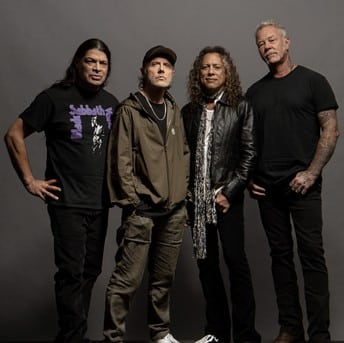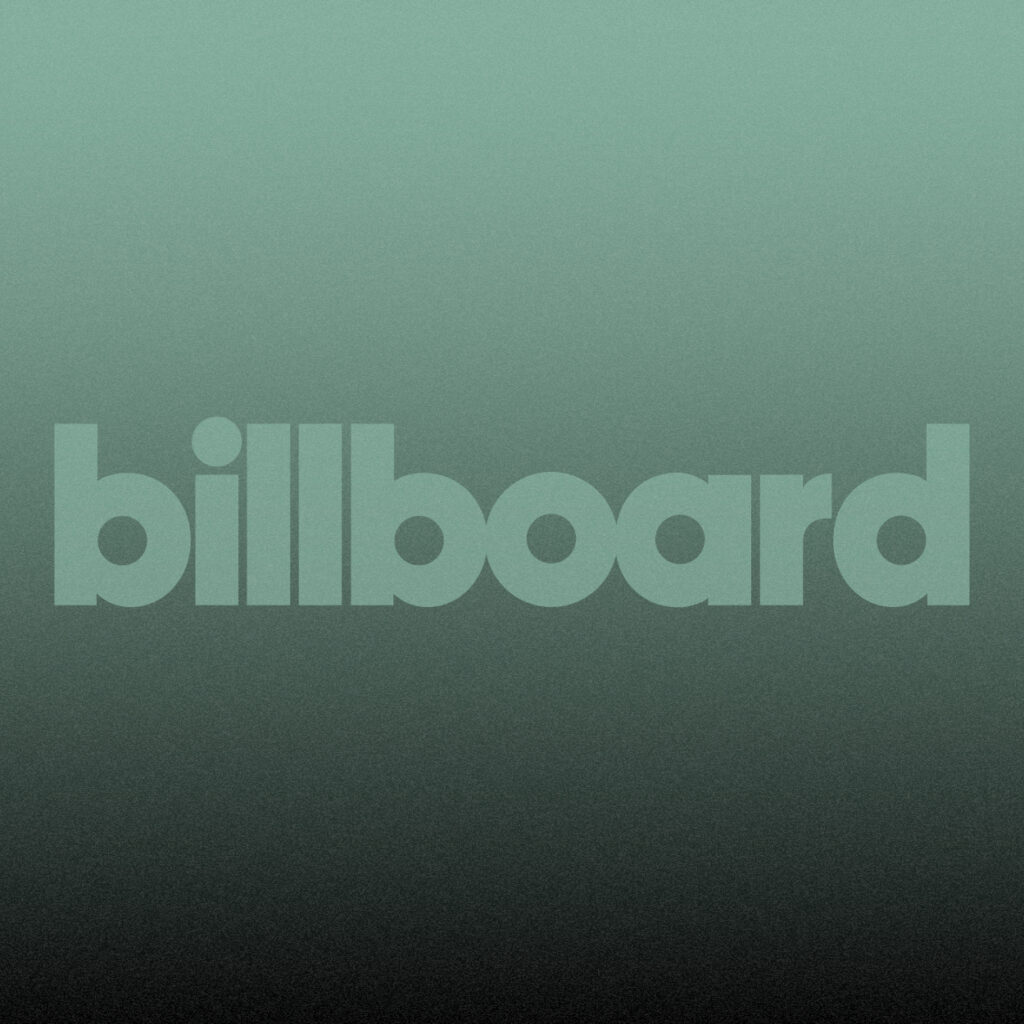genre rock
Page: 6
Trending on Billboard More than a decade after first stringing together two No. 1s in a row on Billboard’s Adult Alternative Airplay chart, Of Monsters and Men does it a second time, topping the Nov. 22-dated tally with “Ordinary Creature.” Explore See latest videos, charts and news However, unlike the previous edition of the feat, […]
Trending on Billboard
Five Finger Death Punch extends its record No. 1 streak on Billboard’s Mainstream Rock Airplay chart (dated Nov. 22), while BABYMETAL becomes the first Japanese act to top the survey.
Explore
See latest videos, charts and news
“The End,” Five Finger Death Punch’s latest radio single, featuring Japanese rockers BABYMETAL, ascends 2-1 to become the former’s 17th leader and 13th in a row, the lengthiest streak in the ranking’s history, which dates to 1981.
The run began in 2018 with “Sham Pain” and includes two leaders in 2025 alone, with “The End” preceded by the one-week reign of “I Refuse,” featuring Maria Brink, this July.
With 17 rulers, Five Finger Death Punch maintains its standing as the act with the third-most Mainstream Rock Airplay No. 1s.
Most No. 1s, Mainstream Rock Airplay:21, Shinedown19, Three Days Grace17, Five Finger Death Punch14, Foo Fighters14, Metallica13, Disturbed13, Godsmack13, Linkin Park13, Van Halen
“The End” was initially recorded for the Ivan Moody-led band’s 2022 album AfterLife and was redone for this year’s BEST OF (Volume 2) release, which introduced re-recordings of Five Finger Death Punch hits.
As for BABYMETAL, the band becomes the first act, lead or featured, from Japan to top Mainstream Rock Airplay. While it’s also the first act based on the Asia continent to rule the ranking, it has two colleagues in some regards; Asking Alexandria was originally formed in the United Arab Emirates before an early move to England, while System of a Down began in the United States but three of its four members were born abroad (Serj Tankian and John Dolmayan in Lebanon to Armenian parents, Shavo Odadjian in Armenia), while its fourth, Daron Malakian, was born in the U.S. to Armenian parents.
Concurrently, “The End” rises 19-17 on the all-rock-format, audience-based Rock & Alternative Airplay chart with 2.5 million audience impressions, up 16%, in the week ending Nov. 13, according to Luminate.
All Billboard charts dated Nov. 22 will update on Billboard.com tomorrow, Nov. 18.

Trending on Billboard As we learned this weekend during his stint hosting Saturday Night Live, The Running Man star Glen Powell contains multitudes. In the promos for Saturday’s (Nov. 15) episode Powell showed off his considerable dancing skills, and during the episode he proved he can handle accents, suit up as a member of the […]
Trending on Billboard
Deftones will return to Australia and New Zealand in 2026 for their first arena tour in nearly a decade, bringing Interpol and Ecca Vandal along for the ride.
The alt-rock band will hit the region in May for a run of five arena shows. The tour kicks off with back-to-back nights at Sydney’s Qudos Bank Arena on May 2–3, then heads to Brisbane Entertainment Centre on May 6 and Melbourne’s Rod Laver Arena on May 9–10, before wrapping at Auckland’s Spark Arena on May 13.
Explore
See latest videos, charts and news
It marks Deftones’ first Australia and New Zealand tour in almost 10 years, underlining how rare a full-scale run from the band has become in the region. All shows will feature Interpol as special guests, with Melbourne artist Ecca Vandal opening.
Interpol’s inclusion brings a stack of indie-rock staples — from 2000s breakthrough “Obstacle 1” and “Evil” to songs from more recent albums — while Ecca Vandal has earned a reputation at home for fusing punk, hip-hop and electronic influences into high-energy sets.
The tour comes on the heels of Private Music, Deftones’ 10th studio album, released earlier this year. The set debuted at No. 5 on the Billboard 200 and bowed at No. 1 on Billboard’s Top Rock & Alternative Albums chart, according to Billboard’s Chart Beat coverage, giving the band another top-tier rock debut after Diamond Eyes, Gore and Ohms all opened in the top 10.
Private Music also extended their streak on the Top Hard Rock Albums chart, where the band has now logged multiple No. 1 entries. Across their career, Deftones have become one of heavy music’s most enduring crossover acts, with 2000’s White Pony earning a Grammy win and later albums like Diamond Eyes (No. 6), Koi No Yokan (No. 11), Gore (No. 2) and Ohms (No. 5) all landing high on the Billboard 200.
The general on-sale tickets go live Nov. 21, with various presales — including artist, promoter and venue offers — rolling out earlier that week.
Deftones 2026 Australia & New Zealand Tour DatesWith Interpol and Ecca Vandal
May 2 – Sydney, Qudos Bank Arena
May 3 – Sydney, Qudos Bank Arena
May 6 – Brisbane, Brisbane Entertainment Centre
May 9 – Melbourne, Rod Laver Arena
May 10 – Melbourne, Rod Laver Arena
May 13 – Auckland, Spark Arena
Trending on Billboard
The performers for the 2025 Thanksgiving Day NFL halftime shows have been announced. Post Malone, Jack White and Lil Jon are set to take the stage during the three games on Thursday (Nov. 27).
Explore
See latest videos, charts and news
Malone will perform at the Dallas Cowboys-Kansas City Chiefs game at AT&T Stadium in Arlington, Texas. White will headline the Detroit Lions-Green Bay Packers matchup at Ford Field in Detroit, while Lil Jon will appear at the Baltimore Ravens-Cincinnati Bengals game at M&T Bank Stadium in Baltimore.
Posty shared the news in a joint Instagram post on Sunday (Nov. 16), featuring a video of himself in Cowboys gear driving a horned semi truck into Dallas.
“Our big secret’s out! The one and only @postmalone will ring in The Salvation Army’s famous #RedKettleKickoff at the Dallas Cowboys halftime show this Thanksgiving on CBS. Let’s make this a Texas-sized kickoff!” the caption read.
Malone added in the comments, “how bout them cowboys?!!”
In a separate statement, the “I Had Some Help” singer added, “I’m from Texas. I grew up a Cowboys fan and have been watching this halftime show for years. It’s a real honor to be part of the Red Kettle Kickoff with The Salvation Army and the Dallas Cowboys and help bring hope to so many people.”
Detroit native Jack White also announced his performance through Instagram on Sunday, sharing a post showing a blue vinyl album being printed, with the record’s circular label highlighting his halftime show appearance. “Hot off the press,” the caption read.
White’s announcement follows news that fellow Detroit artist Eminem, along with his longtime manager Paul Rosenberg, signed a multi-year partnership with the Lions to executive-produce the team’s Thanksgiving halftime show. Slim Shady and Rosenberg will consult on all aspects of the halftime show’s production and presentation, including talent selection, from 2025 through 2027.
Earlier in the week, it was confirmed that Lil Jon will perform during the Bengals-Ravens Thanksgiving night game. The rapper will also appear at the 99th Macy’s Thanksgiving Day Parade in New York City earlier that day.
Check out Post Malone and Jack White’s Thanksgiving halftime show announcements below on Instagram.
Trending on Billboard
Yungblud is taking a break from the road for the remainder of 2025.
On Saturday (Nov. 15), the 28-year-old British singer took to social media to announce that his doctor has ordered him to cancel all of his concerts for the rest of the year.
“This week when I got home off the road, and went to have some tests done (like I usually do) and my voice and blood tests have raised some concerns,” Yungblud wrote on his Instagram Story. “It is in my nature to run and run until I run myself into the ground without giving a f—k about anything apart from the music and you guys but this time I’ve been told I have to take it seriously and can’t f—k around.”
The canceled shows from his Idols World Tour include stops in Philadelphia (Nov. 19), Cleveland (Nov. 23), and Washington, D.C. (Nov. 25–26), as well as dates in Mexico City and other locations across Latin America.
Yungblud noted that all U.S. tickets will be refunded, and fans who provide an address will receive “a gift.”
“My heart is broken,” the Doncaster-born musician added. “I don’t want (to) do any lasting damage to myself, we are on a journey that I want to last forever. I understand that some of you will be frustrated. I just want you to know this is so hard for me to do but I promise I will make it up to you.”
The cancellations come roughly two months after Yungblud released his collaboration with Aerosmith, “My Only Angel,” which debuted at No. 1 on Billboard’s Hot Hard Rock Songs chart in September. The track will appear on a five-song collaborative EP, One More Time, set to drop on Nov. 21. The project marks Aerosmith’s first new material since their 2012 album, Music From Another Dimension!
Yungblud released his fourth studio album, Idols, in June, which topped the U.K. Albums Chart and reached No. 15 on the Billboard‘s Top Rock & Alternative Albums chart.
As of press time, Yungblud was still planning to resume his Idols tour in January 2026 with an Australian leg, followed by a U.K. run in April. He will then embark on a North American amphitheater tour next summer.
Trending on Billboard Metallica closed out the Australian leg of their M72 World Tour with a tribute to two of the country’s most influential rock acts, performing covers of AC/DC and Rose Tattoo during their Nov. 15 concert at Sydney’s Accor Stadium. Explore See latest videos, charts and news The gesture came during the band’s […]
Trending on Billboard
Sharon Osbourne is pushing back against an attempt to release early Black Sabbath recordings, publicly challenging former band manager Jim Simpson after he issued a press release claiming legal ownership of the tapes.
Explore
See latest videos, charts and news
The dispute, which escalated over the weekend, comes months after the death of her husband, founding Black Sabbath frontman Ozzy Osbourne.
Simpson, who managed the group in their earliest days, announced on Nov. 14 that he intends to release a collection of 1969 demos recorded before the band adopted the Black Sabbath name. The material, titled Earth: The Legendary Lost Tapes, was initially expected for release in July. The project has yet to materialize, but Simpson maintains he has the right to distribute the recordings.
Sharon publicly disputed those claims in a detailed Instagram post shared on Saturday (Nov. 15). Her post included screenshots of a July 2 email she says she sent to Simpson, warning him against moving forward without the band’s approval.
“As you know, the Band do not want these tapes released, not least as they haven’t heard them despite you saying you would provide copies long ago,” she wrote. “You know that, as a band, Black Sabbath don’t take things lying down and you can be assured that if you go ahead with this against the Band’s wishes we will take any action where their rights are infringed, both here and in America.”
The demos in question feature the band’s original lineup—Ozzy Osbourne, Tony Iommi, Geezer Butler and Bill Ward—during the brief period when they performed under the name Earth. While recordings from this era have long been of interest to collectors, the group has historically kept tight control over their early catalog and archival releases.
The dispute adds to a high-profile week for the Osbourne family. Earlier in the week, Sharon and her children Kelly and Jack Osbourne publicly criticized Roger Waters on The Osbournes Podcast after the Pink Floyd co-founder made disparaging comments about Ozzy in an interview with The Independent Ink. Sharon responded by calling Waters “one of the most twisted, sick individuals I’ve come across in years.”
For now, Simpson’s proposed release of Earth: The Legendary Lost Tapes appears stalled, but Sharon’s post signals the band’s intention to challenge any distribution that doesn’t involve Black Sabbath’s approval. With legal questions unresolved and no release date announced, the future of the recordings remains unclear.

Trending on Billboard
After 61 years of smashing guitars and raising the bar on rock music as an art form, The Who wrapped up their farewell tour six weeks ago in California. But even if the song is over, Pete Townshend is far from finished exploring the creative opportunities presented by the band’s sprawling catalog.
On Friday (Nov. 14), Townshend brought a ballet production of the band’s acclaimed 1973 rock opera, Quadrophenia, to the New York City Center in Manhattan. Directed by Rob Ashford and soundtracked by an orchestral version of the double-album arranged by Rachel Fuller, Quadrophenia, A Rock Ballet—which previously played in London as Quadrophenia, A Mod Ballet—made its Stateside debut. The show boasts a remarkably talented cast (including Ansel Elgort as the bare-chested, guitar-bashing Godfather) who deftly split the difference between stunning dance moves and the expressive yet subtle dramatics this story–about a young man struggling to find his place in the world while clashing with friends, family and himself–demands.
Lead performer Paris Fitzpatrick as Jimmy was revelatory, especially in the final scene where he writhes and spins through a near-suicidal emotional breakdown on a cliff overlooking a raging sea. (When it comes to the Who’s rock operas, Tommy, for all its virtues, is campy and outrageous, while Quadrophenia feels gritty and grounded.) Aside from the orchestral score—which includes two full-on rock detours, “My Generation” and “I Can’t Explain,” era-appropriate Who tunes not present on the 1973 LP—Paul Smith’s costume designs for mods, rockers, British soldiers and bellhops are a delight.
But what really makes Quadrophenia, A Rock Ballet land on the right foot is the choreography. A balletic interpretation of a ‘70s rock opera could go astray or painfully wrong in so many ways, yet choreographer Paul Roberts managed to convey the nervous thrills and impotent frustrations of youth with movements that are frenetic yet graceful, jaw-dropping but never showy. Jimmy’s fantasy about a bisexual three-way was a standout moment, marvelously expressing the potent cocktail of erotic longing and societal shame that accompanies adolescence.
Tragically, Roberts, who was also a frequent collaborator of Harry Styles, died of cancer on Sept. 26 at the age of 52. After several bows from the cast, Townshend—who also appears during the show as a guitar-strumming elder statesman (no, Pete doesn’t plié or jeté)—came out to a standing ovation and said a few words about his late collaborator.
“He’s not with us anymore,” Townshend said, dedicating the show to Roberts. “We worked right through to the end of the show in rehearsals and sessions in Sadler’s Wells and London. Then he went off to sadly pass away from cancer. This show, hopefully, we brought it—I brought it to New York out of my own pocket,” he said to appreciative applause. “You know how I feel about the U.S. of A and, in particular, this city. I really wanted to bring it here for him, his husband Phil (Griffin) and everybody in this company. It’s a British company and we brought some of our crew here to New York. It’s not the usual thing and I’m so grateful to all the unions for helping this happen. Thanks for supporting us here.”
Following the show, Townshend joined Elgort, Fitzpatrick and the rest of the cast and crew for tapas, drinks and even a mini The Fault in Our Stars reunion (Shailene Woodley came out to support her former co-star) at the venue’s VIP lounge.
Quadrophenia, A Rock Ballet wraps its New York City Center run on Sunday (Nov. 16), but hopefully this won’t be the last time it graces Stateside stages. While it’s far different from the recent (also excellent) Broadway revival of The Who’s Tommy, both productions demonstrate that the Who’s catalog remains fascinating fodder for a variety of art forms.

Trending on Billboard
The first day of the 2025 Corona Capital festival took place on Friday (Nov. 14), marking the grand return of Foo Fighters to Mexico City after a three-year absence. The explosive and unforgettable performance turned into a celebration filled with hits from Dave Grohl’s rock band’s 30-year career.
On day one, the musical feast — which is celebrating its 15th edition — was filled with 1990s nostalgia but also showcased new talents from genres like indie, soul, electro-pop, and folk. It drew over 78,000 attendees (according to promoter Ocesa) who enjoyed performances by Queens of the Stone Age, Franz Ferdinand, Garbage, Kaiser Chiefs, 4 Non Blondes, Jet, Lucy Dacus, Bad Bad Hats, Debby Friday, and other acts. The audience, demanding yet warm, kept the energy and good vibes throughout the day, which stretched into the early hours of Saturday at the Curva 4, the Formula 1 venue in Mexico City.
One of the surprises this year was the performance by veteran band 4 Non Blondes, who won over both old and new fans following the viral trend of the Nicki Minaj mash-up “Beez in the Trap” fused with “What’s Up?” The new song has been used in hundreds of thousands of TikTok videos and brought the ’90s anthem, written by singer-songwriter Linda Perry, back onto the Billboard Hot Rock & Alternative Songs chart.
The program continues on Saturday (Nov. 15) with performances by U.S. star Chappell Roan, whose appearance at Corona Capital marks her debut on Mexican stages, as well as shows by Vampire Weekend, Damiano David, Aurora, Mogwai, Alabama Shakes, Jehnny Beth, Haute & Freddy, Half-Alive, and more.
Find out which were our favorite five acts from the first day of the 2025 Corona Capital festival below.
Foo Fighters, the Best of the Best

 State Champ Radio
State Champ Radio 





